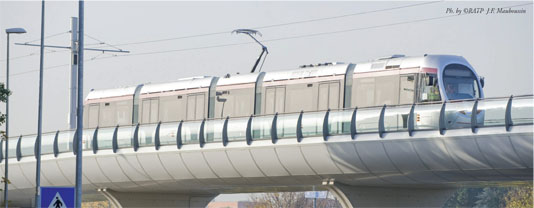Fifty-two years after the last tram stopped in January 1958, a new, modern and efficient tram was put into service in Florence, on 14 February 2010. Half a century of continuous controversy and differences of opinion on how to develop public transport in one of the most beautiful cities in the world and its suburbs, only reached a decision in the mid-1990s to propose, not without some difficulty, a transport system undergoing a Renaissance all over Europe in medium-sized cities like the Tuscan capital. And the city which symbolizes the Italian Renaissance couldn’t not embrace the innovations and potential which the new tramway systems guarantee. We talked to the two most important figures in Gest S.p.A., the company holding the concession for running the Florentine tramway system: Chairman, Bruno Lombardi and Managing Director, Jean-Luc Laugaa. We met up at the Gest offices in Scandicci, inside the ultra-modern complex which also houses the fleet’s workshops and depot. On the walls hang the maps of the T1 Line already in operation and the routes of the soon to be built T2 and T3 Lines, while through the large windows trams can be seen coming and going from the depot.
Railway Engineering: Gest is the company in charge of running the T1 Line of the Florence tramway network and in future also the T2 and T3 Lines. Could you first of all give us an overview of Gest, its history and what it does? What are the most important features of the concession?
Bruno Lombardi: Gest is a joint stock company responsible for running services on the tramway network in Florence, both on the existing T1 Line, the only one currently in operation, and the T2 and T3 Lines, due to come into service in the near future. Until 2012, Gest’s shareholding was divided between the French company RATP Dev (part of the RATP Group) one of the world’s leading groups in the public transport sector…
Full article is available only for registered users.
Click the link below to download pdf version of Railway Engineering
